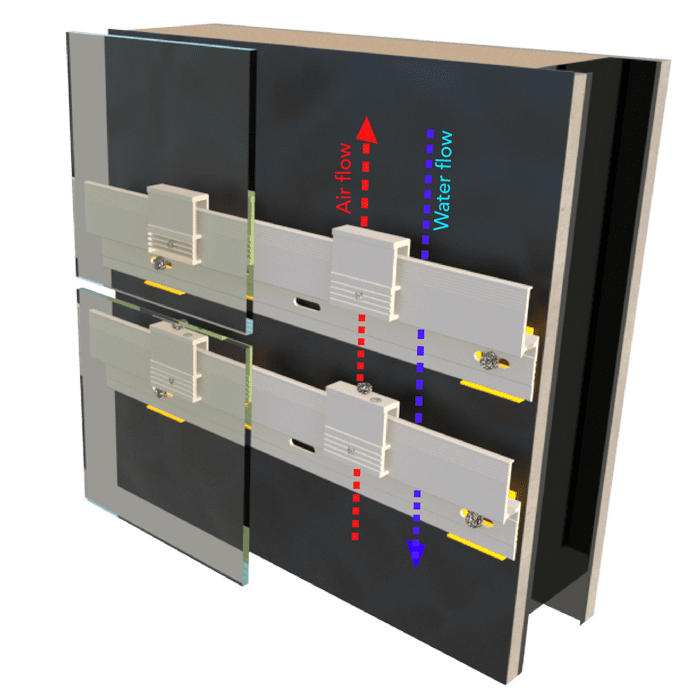How a Rainscreen Cladding System Works
 Rainscreen cladding systems and rainscreen attachment systems protect the core skin of the building from environmental elements.
Rainscreen cladding systems and rainscreen attachment systems protect the core skin of the building from environmental elements.
The rainscreen cladding system consists of a load-bearing wall, an insulation layer, and rainscreen panels fixed to the building using a supporting structure. This creates an air cavity between the load-bearing wall and the cladding panel, allowing continuous ventilation and thermal insulation to the building.
The external rainscreen panels act as a barrier against driving rain, ice, and snow, reducing condensation and humidity from inside and outside the building. The continuous circulation of air inside the air cavity works as an extra protection layer and removes the possible water filtrations that can slip through the cladding joints. Although there is some seepage through vertical rain, the energy of its impact will have been reduced by the time it has reached the inner surface. The ventilated cavity acts as a further weather-resistant barrier, dissipating any leeched water either through gravity or evaporation.
Avoids condensation and humidity
The rainscreen façade system reduces condensation and humidity from both inside and outside the building. The continuous circulation of air inside the air cavity works as an extra protection layer and removes the possible water filtrations that can slip through the cladding joints.
Extends the life of the façade
The continuous ventilation inside the air cavity improves the durability of the rainscreen cladding. The façade’s lifetime is even longer when using engineered stone rainscreen cladding.
Reduces structural movements
The air cavity allows for maintaining a more stable temperature in the building construction envelope. This helps prevent the risk of cracks and other structural issues. Since the structure is not subject to extreme temperature changes, expansion or contraction is reduced.
Improves thermal and acoustic insulation
When insulation is combined with the rainscreen cladding, the thermal and acoustic insulation of the building improves significantly.
Increases energy efficiency
Rainscreen systems help reduce hot and cold air and thermal movement through the wall, reducing energy costs.
Requires virtually no maintenance
Rainscreen cladding systems require almost zero maintenance, especially if you choose composite stone rainscreen panels that withstand extreme weather conditions, graffiti, and impact.










